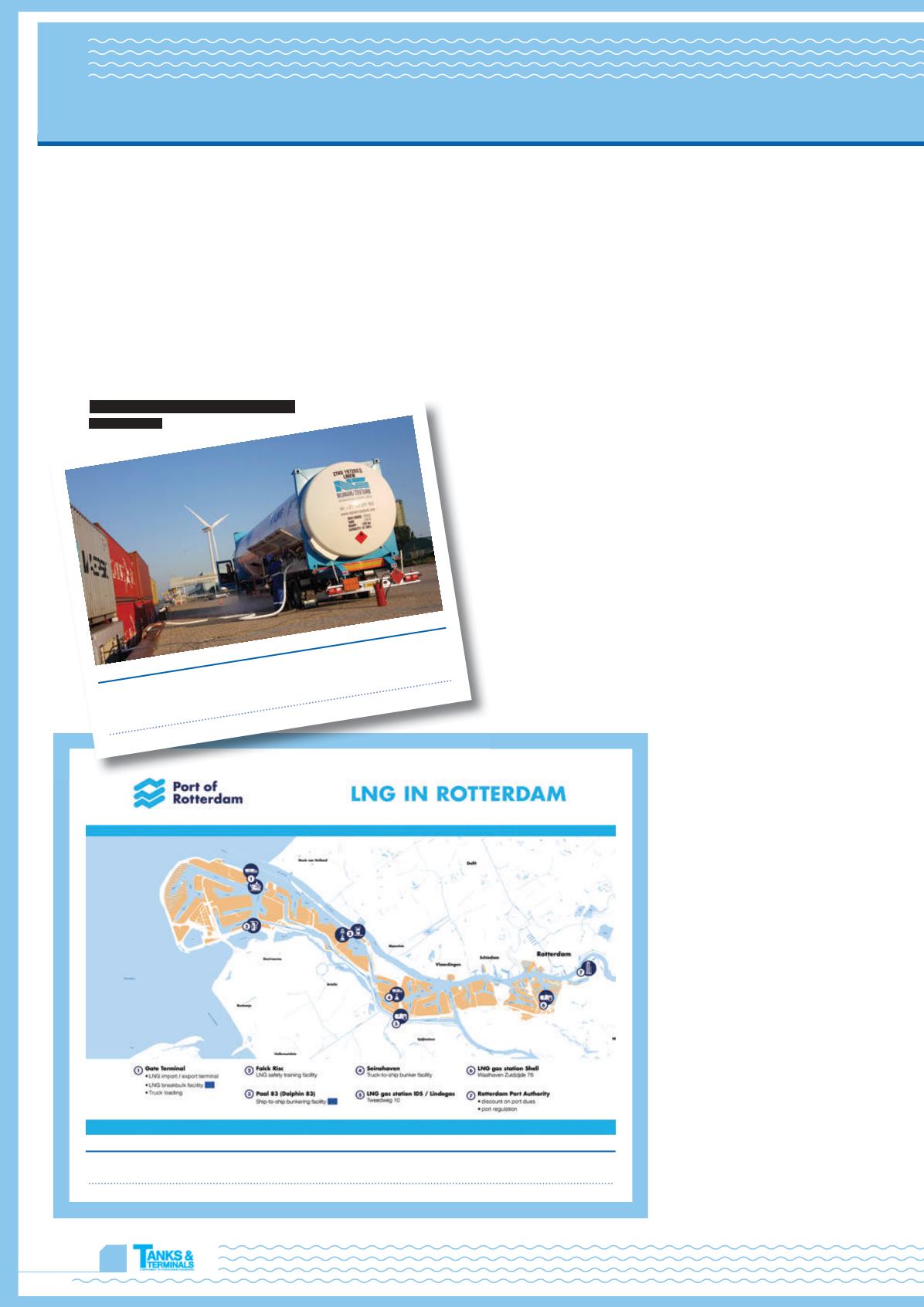
HYDROCARBON
ENGINEERING
92
event of the three year EU-subsidised project ‘LNG
Masterplan’. In December 2015, hundreds of LNG
stakeholders gathered in Rotterdam for the latest
details on safety, emergency response, bunkering,
fuelling, and technical and market developments.
Facilities and terminals
First in the LNG chain and closest to shore is the
LNG import terminal, the Gate terminal (an initiative
of Dutch Gasunie and Koninklijke Vopak). The
throughput capacity of the terminal is 12 billion m
3
/y
of natural gas, which can be increased to
16 billion m
3
/y in the future. Located on the
Maasvlakte near the port entrance, the terminal
consists of three storage tanks, each with a storage
capacity of 180 000 m
3
that make it possible to unload
large amounts of LNG at once, two jetties and a
process area where the LNG is regassified. In
mid-December, the terminal received its 50
th
shipment
of 2015 from an LNG carrier. The LNG is either
regasified at Gate to be transported through an
underground pipeline to the European gas distribution
network, or it is loaded into vessels or trucks. A
facility for break bulk is also under construction at the
terminal and is expected to be in operation in 2016.
With this facility, the Gate terminal can expand its
services to short sea and inland shipping.
Further into the port, two LNG gas stations are
located in strategic positions to service LNG trucks. In
recent years, these trucks have been increasingly used
for long distance transport
and distribution. One gas
station is operated by
IDS/Linde Gas, and the
other by Shell. The two gas
stations are part of a
complete network of
20 stations in the
Netherlands, which are
typically situated near
distribution centres or
main highways.
A dedicated dolphin
for mooring LNG ships was
placed in Autumn 2015, and
the port has a dedicated
area for truck-to-ship
bunkering, the 'Seinehaven'.
The port bylaws were
updated to make the
bunkering not only
available, but also possible
and allowed. The Port of
Rotterdam Authority plays
an important role in
facilitating and bringing
together the (local)
The Port of Rotterdam is the largest port in Europe.
Located in the city of Rotterdam, the Netherlands, the
port's annual throughput amounts to some 450 million t.
The total length of the port area is more than 40 km and
the site includes 12 500 ha. of land and water, of which
approximately 6000 ha. is business sites. Approximately
30 000 seagoing vessels and 110 000 inland vessels visit
the Port of Rotterdam every year.
LNG investment
The Port of Rotterdam has made considerable
investments in LNG over the last few years, and it is
now a true European LNG hub, so much so that the
port was selected as the location
for the final
Port of Rotterdam,
The Netherlands
LNG facilities at the Port of Rotterdam.
Truck-to-ship bunkering in the Seinehaven
(Seine port).


